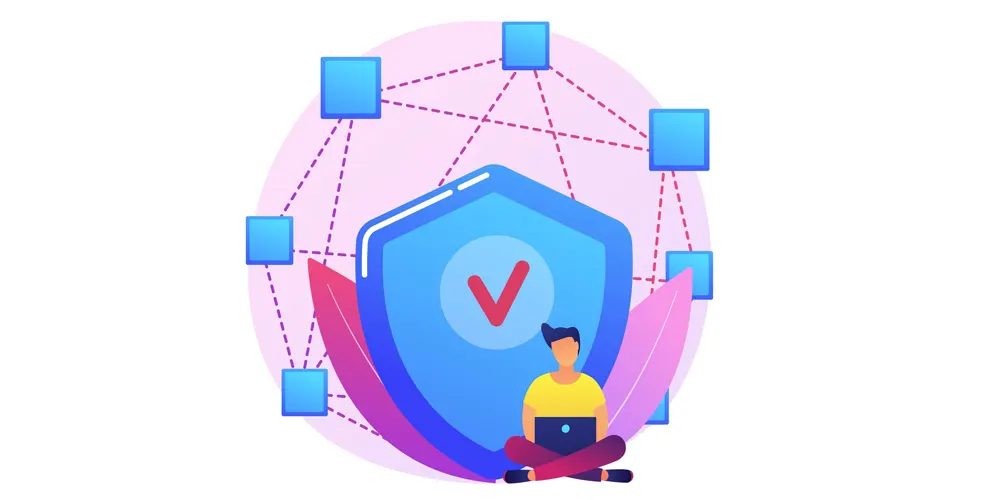VoIP Carrier Network Components - Understanding Session Border Controllers
When it comes to VoIP Networks, there are too many components working together to help us connect the world. Knowing and understanding what each component does thus, becomes necessary for every VoIP Carrier.
This knowledge helps VoIP carriers build a robust VoIP network and upgrade the existing one with better capabilities and throughput.
An important component that sits at the core of any VoIP Carrier’s Network is the Session Border Controller. The component serves a multitude of purposes and is essential in keeping the communication up and working smoothly.
Thus, every VoIP Carrier needs to know what it is and what things it is capable of handling. In this blog, we shall cover all the topics that will help VoIP Carriers understand Session Border Controllers better.
Before we get into it, let’s start off with a bit of basics!
A Brief Overview of VoIP Carrier Network

A VoIP carrier network is a sophisticated infrastructure designed to facilitate the routing of voice and multimedia communication services over the Internet.
At its core, the network is powered by softswitches and media gateways. Softswitches are specialized servers responsible for the intricate tasks of call control, routing, and signaling. They ensure that calls reach their intended destinations seamlessly.
Media gateways play a pivotal role in the network. They adeptly convert voice and multimedia signals between VoIP and traditional circuit-switched networks. Thus ensuring compatibility and continuity of communication.
Session Border Controllers (SBCs) stand as vigilant sentinels within this network. They serve as the guardians of security and interoperability, diligently controlling the signaling and media streams of VoIP sessions.
SBCs enforce security policies and quality of service (QoS) standards. These are vital for a reliable and secure communication environment.
Peering points within the VoIP carrier network facilitate interconnections with other carrier networks and service providers. These connections are the bridges that enable the exchange of traffic and calls between different carriers.
Billing and Operations Support Systems (OSS/BSS) form another critical aspect of the network. They are the backbone of financial and operational processes, managing call rating, billing, and customer accounts.
The network infrastructure, consisting of routers, switches, and data centers, provides the necessary backbone for data transmission.
In pursuit of unparalleled reliability, VoIP carrier networks incorporate redundancy and failover mechanisms. These mechanisms guarantee high availability, ensuring that even in the face of network failures, communication remains uninterrupted.
In essence, a VoIP carrier network represents a harmonious integration of hardware, software, and network infrastructure that powers modern telecommunications.
What is a Session Border Controller?

A Session Border Controller (SBC) is a security device used in VoIP networks to protect and manage the flow of communication sessions.
Imagine you're making a phone call using a VoIP app on your computer to a friend across the world. The SBC acts like a guard at the gateway. It checks the call request to ensure it's legitimate and secure.
It verifies that your call request isn't a threat (like a hacker trying to intercept it) and that the call uses the right technical rules to connect properly.
If everything checks out, it lets your call go through smoothly, ensuring clear and safe communication. Essentially, it's the digital enforcer making sure your VoIP calls are private, secure, and follow the rules of the internet road.
Role of a Session Border Controller in a VoIP Carrier Network
In a VoIP carrier network, a Session Border Controller (SBC) plays a multifaceted and critical role. It ensures the secure, efficient, and reliable operation of the network.
Here's a detailed explanation of the roles and functions of an SBC in a VoIP carrier network.
1. Security Enforcer

Firewall Protection - SBCs act as the first line of defense, safeguarding the network from unauthorized access and cyber threats. They employ firewall capabilities to prevent malicious attacks, ensuring the integrity of the network.
Encryption - SBCs often provide encryption services to protect the confidentiality of voice and data traffic. They ensure that sensitive information remains private and secure during transmission.
Access Control - SBCs enforce access policies, allowing only authorized users and devices to connect to the network. This helps prevent unauthorized access or eavesdropping.
2. Interoperability Facilitator

Protocol Translation - VoIP networks often use different communication protocols. SBCs act as intermediaries, translating these protocols to ensure that different devices and networks can communicate effectively with each other.
Codec Conversion - SBCs can convert between different audio codecs to match the capabilities of the calling parties, optimizing voice quality and compatibility.
3. Quality of Service (QoS) Management

SBCs monitor and manage network traffic to prioritize VoIP packets. Thus ensuring low latency, minimal jitter, and high-quality voice and video communication. This is essential for providing a smooth user experience.
4. Session Control and Management
SBCs establish, manage, and terminate VoIP sessions. They help set up calls, handle signaling between endpoints, and ensure the proper termination of sessions, freeing up network resources when calls are completed.
5. Network Topology Hiding

SBCs conceal the internal network structure from external entities. This in turn enhances security by preventing potential attackers from gaining insights into the network's architecture.
6. Distributed Denial of Service (DDoS) Mitigation
SBCs can identify and mitigate DDoS attacks in real-time. They prevent DDoS attacks from overwhelming the network and causing service disruptions.
7. Policy Enforcement
SBCs enforce network and communication policies, ensuring that calls adhere to regulatory requirements and carrier-specific guidelines.
8. Billing and Reporting

SBCs collect data on call usage and can assist in call rating and billing processes. They provide valuable insights into network performance and usage patterns.
All things considered, an SBC is an integral component in any VoIP Carrier Network.
Types of SBCs
Session Border Controllers (SBCs) come in various types to cater to different network environments and deployment scenarios. Here are the main types of SBCs:
1. Hardware-Based SBCs
These SBCs are physical devices designed to handle the demands of larger networks and high call volumes. They are dedicated hardware devices with specialized processing capabilities. This makes them suitable for carrier-grade deployments and large-scale VoIP networks.
2. Software-Based SBCs
Software-based SBCs run on standard servers or virtual machines. They offer flexibility and scalability, as they can be deployed on existing hardware or in cloud environments. This type is ideal for smaller networks or businesses looking for a cost-effective solution.
3. Cloud-Based SBCs
Cloud-based SBCs are hosted in cloud infrastructure. They provide the advantages of scalability and ease of management. This makes them suitable for businesses and service providers that want to leverage cloud resources for VoIP services without investing in physical hardware.
4. Virtual SBCs
Virtual SBCs are a subset of software-based SBCs designed to run in virtualized environments. They are highly adaptable and can be deployed alongside other virtualized network functions. This makes them a good choice for network operators implementing Network Functions Virtualization (NFV).
5. Integrated SBCs
Some networking equipment, such as routers and session initiation protocol (SIP) gateways, include integrated SBC functionality. These devices offer the benefits of SBCs within a broader networking context. The benefits thus granted are simplifying network architecture and management.
6. Session Routing SBCs
Session routing SBCs focus on intelligently routing VoIP traffic based on specific criteria, such as quality, cost, or compliance with regulatory requirements. They excel at optimizing call routing in complex networks.
7. Edge SBCs
Edge SBCs are positioned at the network edge, serving as a point of entry or exit for VoIP traffic. They are typically responsible for security and session management at the network perimeter, protecting against external threats.
8. Enterprise SBCs

Designed for corporate networks, enterprise SBCs cater to the unique needs of businesses. They focus on features like SIP trunking, remote worker support, and interoperability with various communication platforms.
9. Carrier-Grade SBCs

Carrier-grade SBCs are designed for telecommunications carriers and service providers. They are engineered to handle large volumes of traffic, support complex routing, and meet stringent reliability and security requirements.
Choosing the right type of SBC depends on factors. These factors include network size, scalability needs, budget, and the specific requirements of the deployment.
The versatility of SBCs allows organizations to select the type that best fits their VoIP network infrastructure and communication objectives.
Benefits of Using an SBC
Considering the central role it plays, the benefits an SBC has to offer are varied and spread over a wide area of scope. Here's a detailed explanation of each of the benefits of using a Session Border Controller (SBC).
1. Policy Enforcement
SBCs enforce network and communication policies, ensuring that calls adhere to specific rules and regulations. For example, they can enforce policies related to call recording, emergency services, or access control.
This ensures that the network operates within legal and regulatory boundaries while maintaining a high level of security and control.
2. Cost Savings

SBCs can optimize call routing by selecting the most cost-effective paths for voice traffic. This is particularly beneficial for long-distance and international calls. Here SBCs can choose routes that minimize expenses, resulting in significant cost savings for carriers and enterprises.
3. Enhanced Scalability
SBCs are highly adaptable to changing network demands. They can handle increased call volumes and traffic loads. This makes it easier to scale VoIP infrastructure as needed without the need for substantial hardware investments. This scalability supports the growth of carriers and businesses.
4. Simplified Network Management
SBCs consolidate various functions, such as security, routing, transcoding, and session control, into a single device. This simplifies network architecture, reduces complexity, and streamlines management tasks. Network administrators can more efficiently configure and maintain the network.
5. Redundancy and Failover
SBCs incorporate redundancy and failover mechanisms, ensuring high availability. In the event of network failures or hardware issues, SBCs seamlessly reroute traffic to backup paths or devices. Thus, service disruptions and downtime are minimized.
6. Regulatory Compliance

SBCs help organizations adhere to legal and regulatory requirements. For instance, they can facilitate call recording and support lawful intercept capabilities, ensuring compliance with government regulations.
Notably, the Federal Communications Commission (FCC) mandates the use of SBCs to block fraudulent traffic from entering the U.S. This prevents the spread of illegal robocalls and toll fraud.
7. Enhanced Network and Traffic Security
SBCs serve as a robust security barrier for VoIP networks. They offer firewall protection, encryption, and intrusion detection, guarding against various cyber threats. SBCs can also identify and mitigate Distributed Denial of Service (DDoS) attacks, ensuring network security and service availability.
Conclusion
Evidently enough, an SBC does a lot of things quite capably. Sitting at the core of a VoIP network, it acts as the head of security and traffic management.
There are so many things you can achieve using an SBC in terms of traffic management and policy enforcement. Be it security, profits or QoS, you can easily bolster all of these performance parameters using an SBC.
There are also so many types of SBCs that specialize in different functions to choose from. Now that you know and understand Session Border Controllers, you can build a robust VoIP network or upgrade an existing one capably!























































































































